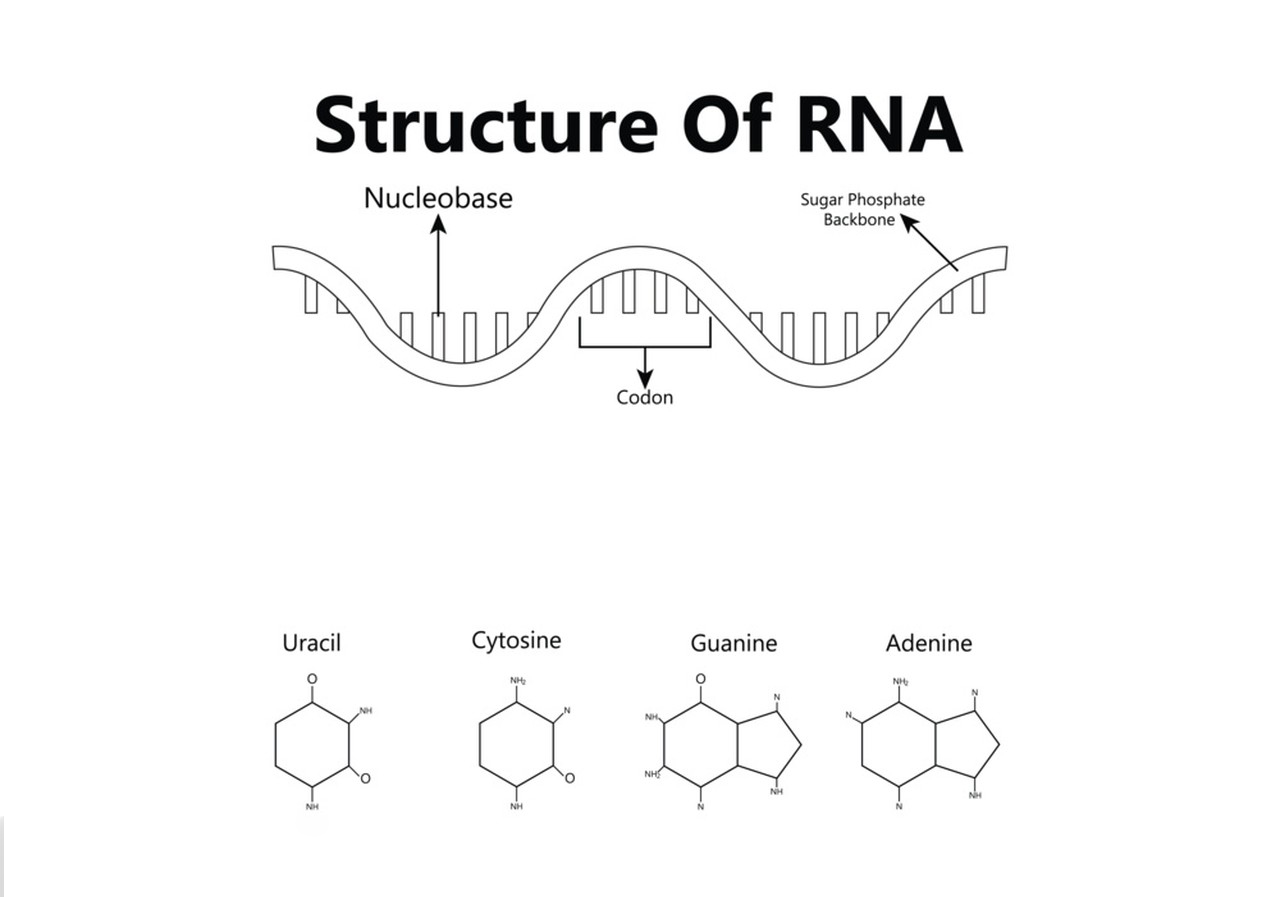Ribonucleic Acid, commonly known as RNA, is a fundamental molecule in biology that plays a crucial role in the central dogma of molecular biology. Here are some key aspects of Ribonucleic acid, including its origin and properties:
Origin of Ribonucleic Acid:
1.Chemical Evolution: The origin of Ribonucleic acid is closely tied to the theory of chemical evolution, which suggests that life on Earth evolved from simple organic molecules. It’s hypothesized that Ribonucleic acid may have preceded DNA in the early stages of life. One prominent theory, known as the Ribonucleic acid world hypothesis, proposes that Ribonucleic acid was the first self-replicating molecule. In this scenario, Ribonucleic acid served both as a genetic material and as a catalyst for chemical reactions, paving the way for the development of more complex life forms.

Properties of Ribonucleic Acid:
1.Nucleotide Building Blocks: Ribonucleic Acid is composed of nucleotides, which are the structural units of the molecule. Each Ribonucleic acid nucleotide consists of three components: a sugar molecule (ribose), a phosphate group, and one of four nitrogenous bases—adenine (A), uracil (U), guanine (G), or cytosine (C).
2.Single-Stranded: Unlike DNA, which typically forms a double helix, Ribonucleic acid is usually single-stranded. However, it can fold back on itself, creating intricate secondary and tertiary structures.
3.Uracil Base: Ribonucleic Acid uses uracil (U) as one of its nitrogenous bases, while DNA uses thymine (T). Adenine (A) still pairs with uracil (U) in RNA, as opposed to adenine (A) pairing with thymine (T) in DNA.
4.Function in Gene Expression: Ribonucleic Acid plays a central role in the process of gene expression, which involves transcribing genetic information from DNA into Ribonucleic acid (transcription) and translating Ribonucleic acid into proteins (translation). There are different types of Ribonucleic acid involved in these processes:
Messenger RNA (mRNA): Carries genetic information from DNA to the ribosomes, where proteins are synthesized.
Transfer RNA (tRNA): Helps in the translation of mRNA into proteins by delivering the appropriate amino acids to the ribosome.
Ribosomal RNA (rRNA): A key component of ribosomes, which are the cellular machinery responsible for protein synthesis.
5.Catalytic Properties: Some Ribonucleic acid molecules, known as ribozymes, can act as enzymes, catalyzing chemical reactions. This underscores the versatility of Ribonucleic acid and its potential role in the early stages of life.

6.Regulatory Functions: Ribonucleic Acid can also have regulatory roles in gene expression. Small Ribonucleic acid molecules, such as microRNAs (miRNAs) and small interfering RNAs (siRNAs), can influence gene expression by targeting specific mRNA molecules for degradation or by inhibiting their translation.
7.Ribonucleic Acid Modifications: Ribonucleic Acid molecules can undergo various post-transcriptional modifications, such as methylation and pseudouridylation. These modifications can affect Ribonucleic acid stability and function.
8.Roles Beyond Protein Synthesis: Ribonucleic Acid has roles beyond protein synthesis, such as serving as a template for reverse transcription in retroviruses (e.g., HIV) and participating in various cellular processes, including splicing of pre-mRNA, Ribonucleic acid transport, and telomere maintenance.
In summary, Ribonucleic acid is a versatile and essential molecule in biology with a rich history that likely predates the emergence of DNA. Its diverse roles, from information transfer to catalysis and regulation, make it a fundamental player in the machinery of life.
